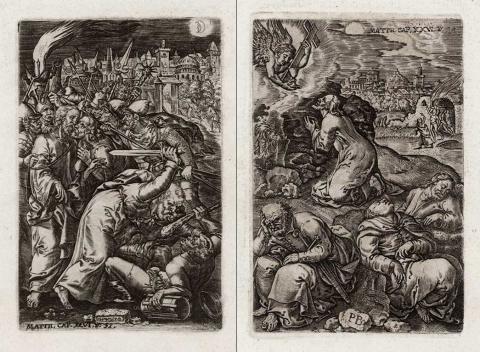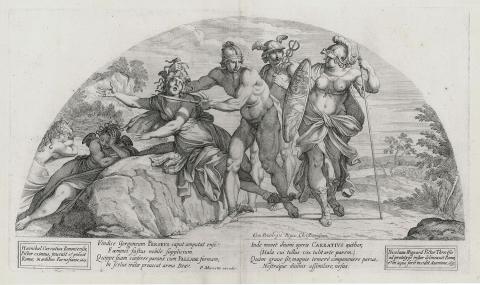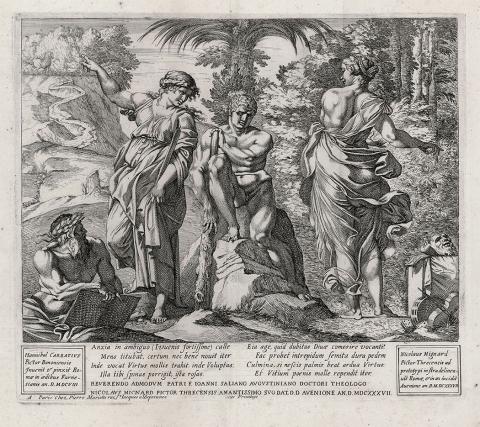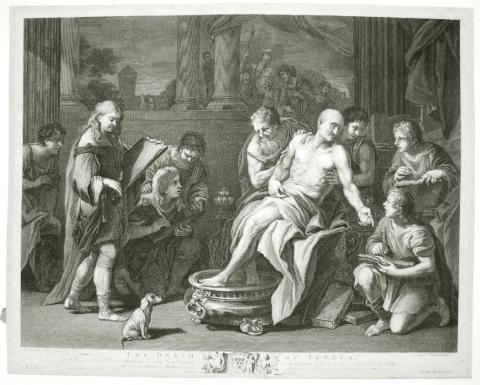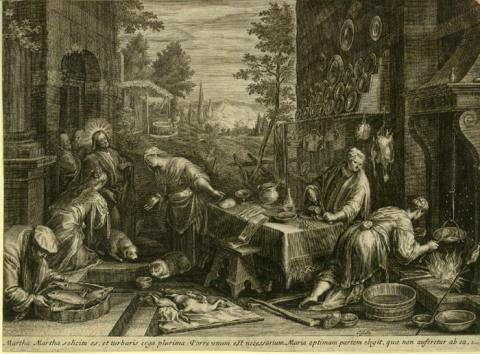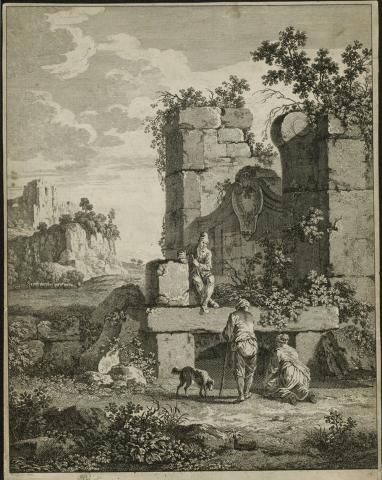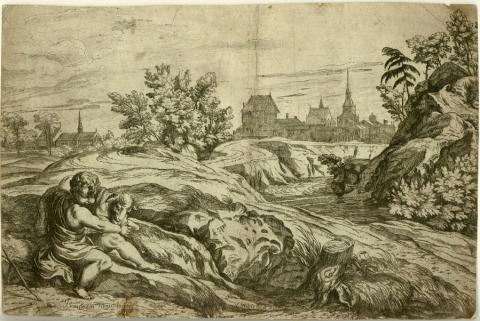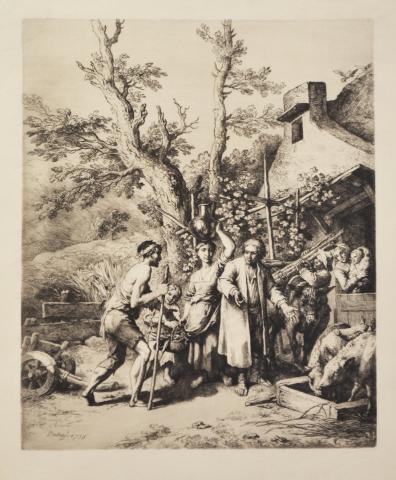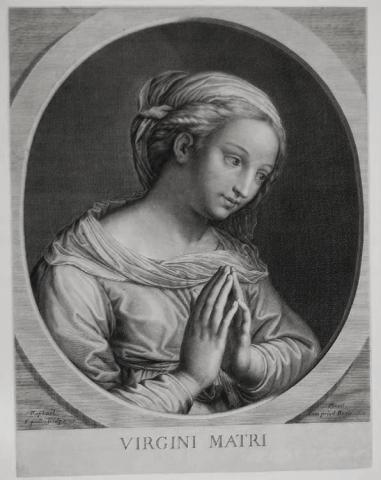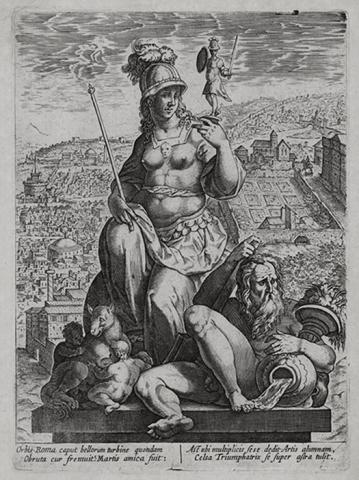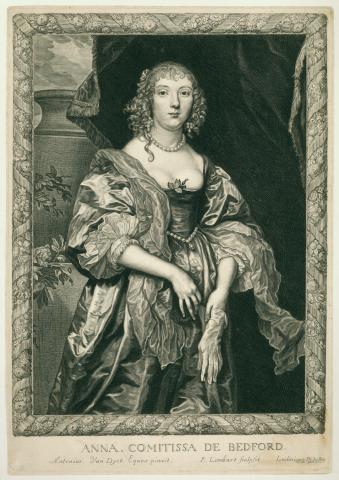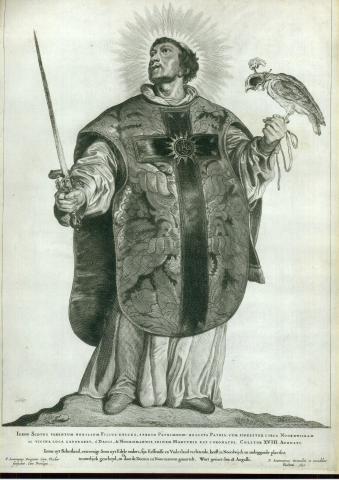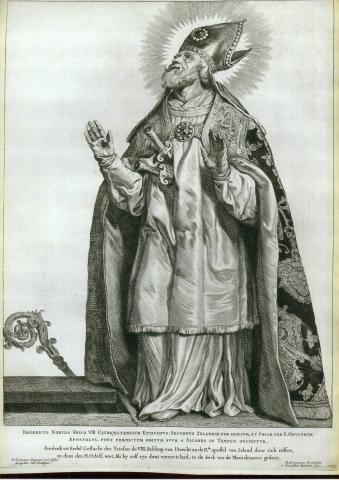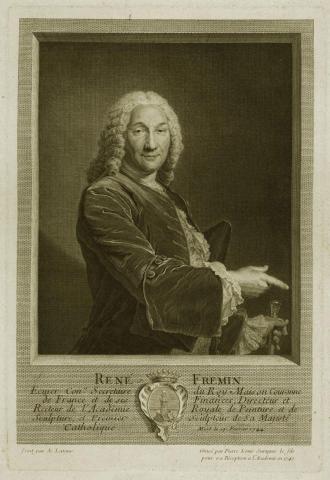This is a rare early engraving by Johannes Wierix after Pieter van der Borcht, printed with an image on both sides of the sheet. Each image measures 4 1/2 x 2 7/ 8 inches, 1583, a good impression on a very early laid type paper, published by 16th century book printer and publisher Christophe Plantin. One side of the sheet shows the 'Betrayal of Christ', the other 'Agony in the Garden'.
Old Master Prints
Nicolas Mignard
Etching by Nicolas Mignard after the frescoes of Annibale Carracci depicting scenes from Homer's Odyssey. Plate size 9 7/8 x 17 5/8, published by Pierre Mariette in 1637, with lettering in Latin below the image. Printed on a very early watermarked laid type paper.
Nicolas Mignard
Etching by Nicolas Mignard after the frescoes of Annibale Carracci depicting scenes from Homer's Odyssey. Plate size 11 3/4 x 13 5/8 inches, published by Pierre Mariette in 1637, with lettering in Latin below the image. Printed on a very early watermarked laid type paper.
Gilles Rousselet
Engraving after Titian, two prints:Prov.Gray:3469;prov.Randall 8841, blind stamp Louvre; image size 15 x 217/8 inches; Thies: Rousselet, a designer and engraver born in 1614, studied the works of C. Bloemaert. A copy of Titian's Louvre painting was made for Mamfrini Gallery in Venice - and Schiavoni made an engraving of it. Thus two pair of the image exist.
Johann Gottlieb Theophilus Amadeus Prestel
This etching with aquatint by the German artist, Johann Gottlieb Theophilus Amadeus Prestel, measures 12 5/8 x 18 1/2 inches, 1784, in two colors on green paper, plate signed and dated, after Parmigianino, artist info on backing, thread margins all around.
Francis Vivares
Etching image size 11 7/8 x 9 3/8 inches, plate signed lower left, Vivares founded an engravers school, member of the Society of Artists he exhibited in 1766 and 1768. His reproductions of Claude de Lorrain were widely appreciated.
Valentine Lefebre
French Old Master Engraving, circa1660, image size 9 13/16 x 9 5/8 inches
plate inscribed: "FVan Campen Formis Venetys" and VLeFebre del et sculpt"
Christian Dietricy
This is an original etching by European old master artist Christian Dietricy (1712-1774) The title of this work is "Der Verlorene Sohn bei dem Pachter", it was created and printed in 1756. It is signed and dated in the plate lower left. The image measures 14 1/4X11 3/4 inches. Printed on a light weight laid type paper. Very good condition
Francois de Poilly the Elder
Engraving, after Raphael; also called La Benediction; later state without engraver's address;
Jan van der Straet
This engraving measures 7 5/8 x 6 inches and has two Latin phrases printed on the bottom margin.
Pierre Lombard
This is an original copper engraving by Pierre Lombard (1613-1682) It is a portrait of "Anna Comitissa De Bedford", The wife of William the Fifth, Earl of Bedford.
This engraving circa 1660 was a copy of the Van Dyck painting at Woburn Abbey The platemark measures 13 7/8X9 1/2 inches. This engraving is tipped to a thicker mounting sheet with collectors annotations on the bottom.
Cornelius Visscher
This is a fine period printing of the engraving of Saint Jerome (Jeroen) of Noordwijk by Dutch engraver Cornelius Visscherm after the design by Pieter Claesz Soutman. The image is in very fine condition printed on an early laid type paper. The image measures 16 3/4X11 1/2 inches.
Cornelius Visscher
This is an early copper engraving by Cornelius Visscher after the painting by Pieter Claesz Soutman. This period impression was printed on an early laid type paper. The image shows the Bishop being killed by two knives in his chest. The image measures 16 3/4X11 5/8 inches.
Pierre Louis Surugue
Engraving after de Latour, 1747, image size 13 1/2 x 9 1/4 in, plate size 14 5/8 x 10 in, sheet size 20 3/4 x 15 1/4 in, Randall Coll. #4356, Fogg Museum provenance
Pagination
Copyright 2021· All rights reserved

